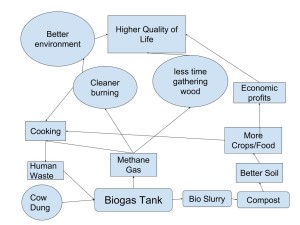- Looking at figure 10.1 the map of Biodiversity hotspots, choose one of the hotspots and research it. Describe the hotspot you would like to visit. Name some of the plants and animals that interest you. Some of the resources you may use from that region. Talk about some of the greatest threats to your hotspots biodiversity.
For my hotspot I chose the Tropical Andes. The Tropical Andes which is one of the most biologically diverse region in the entire world in large part to the vast amount of different micro habitats in the mountainous region. Plant wise this region is home to about 10% of all the worlds species, and 50- 60% of the plants found here cannot be found anywhere else on earth. It is also the center of origin for some of the worlds most important crops such as potatoes and tobacco. This region is also home to almost 980 species of amphibians including one of my favorite the poison dart frogs whose venom has been used for a wide variety of medical uses by humans. some of the greatest threats to the biodiversity of this region are deforestation, mining, road building, and dams are all major contributors to loss of biodiversity in this region. As said previously the fact that 50-60% of the plants in this region are not found anywhere else in the world really raises concern for their loss as there are no alternatives, especially if these plants provide uses for humans such as medicines or food.
2. From this lesson Look at the Case Study: The Amazon Rainforest. Try to connect one or more of the previous lessons to some of the issues described in this case study 150-250 words.
The first lesson I think is important to connect is climate change and it connection to the deforestation of our rainforest. As described our rainforest are essentially the filters of CO2 in our atmosphere as they plants in these regions remove it and use it in photosynthesis. As we destroy more and more of our rainforest we are losing our essential buffer systems that keep our CO2 levels in check. With increasing industrialization these systems are more critical than ever. Another lesson is urban planning. As large cities continue to expand in this region we could see the impact of industrialization reduced with proper planning. blending the expanding areas with the current forest instead of clear cutting can reduce impacts on the environment and loss of habitat. Also making things such as walker or biker friendly neighborhoods could reduce street size and thus the needed are for development. Also these neighborhoods would reduce CO2 emissions.
3. Finally throughout this class we have learned about the impacts humans have on our environment. Briefly describe some of the most important lessons you have learned in this course and why they matter to you.
I think one of the most important lessons to me was the lesson on climate change. Particularly in this lesson the amount of statistical data that disproved my previous stance that climate change isn’t caused by humans it is cause by the earths natural cycles. While this may have some truth the evidence provided has shown that both CO2 levels, temperature shifts, and destruction of climate sensitive habitats have all been shown to correlate with the industrialization of human populations. Lastly i would have to say the Biodiversity lesson does a great job in ending and posing the question about us as humans. We constantly ask ourselves what are we as humans affecting but rarely look at the effects our action have on ourselves. We have been blessed to live in a period on earth in which has been very stable and allowed the human population to grow and thrive. The fact is that stability cannot last forever and we really have to pose the question what will happen when it does. I think this question really affects me because I see myself as a part of the whole process and I want it to remain stable for as long as possible. I need to improve my individual actions that will go towards helping the planet not hurting it. I also need to show support of collective actions that will go towards ensuring a better more sustainable earth tomorrow.

